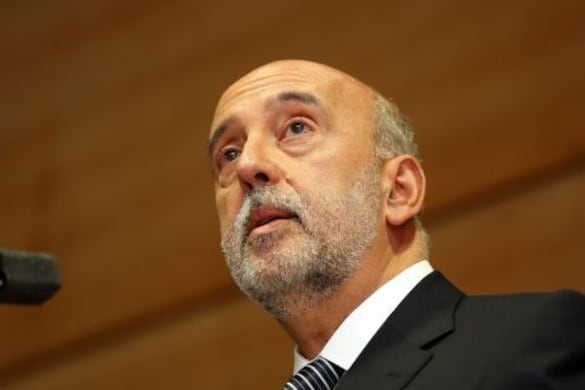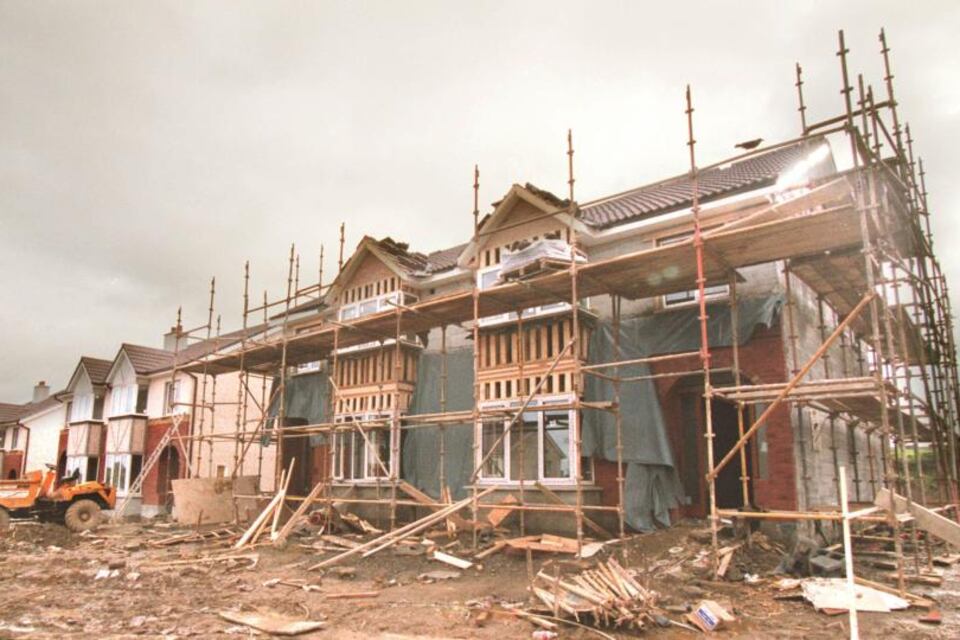Gabriel Makhlouf told staff on his first day as Central Bank of Ireland governor that he would spend his early months in listening mode.
“I will have lots of ‘how’ and ‘what’ questions and almost certainly a number of ‘why’ questions,” he said in an email that day, in September 2019.
But he was clear on the bank’s mission: “That is, to safeguard monetary and financial stability and work to ensure that the financial system operates in the best interests of the consumer and the wider economy. That is how we serve the public interest.”
He had inherited this from his predecessor, Philip Lane, who’d widened the organisation’s aim in the latter part of his tenure from that of “safeguarding stability and protecting consumers”, which then-governor Patrick Honohan had set out in 2012.
READ MORE
Honohan’s interpretation, of course, was of its time. With Ireland in the middle of an international bailout at the time, driven in large part by the multibillion euro bill for preventing an outright collapse of the banking system, safeguarding stability was the main objective. The tracker-mortgage debacle, well under way at the time, would raise questions about the consumer protection element.
The regulator’s decision this week to increase the amount that a first-time buyer can borrow to four times income from 3½ times suggests that it finally gets its broader mission to make sure the system operates in the best interests of the consumer and the wider economy
The mortgage lending rules that Honohan pushed through in 2015 will go down as his defining achievement. The decision to put limits on home lending relative to income and the value of the underlying property have, over the past 7½ years, guarded against the “the credit-chasing-prices-chasing kind of bubble” that Honohan wanted to avoid.
Irish residential prices have surged 128 per cent from their post-crash lows of 2013 and are now more than 2 per cent above their peak of the property boom in April 2007, according to Central Statistics Office (CSO) figures. Dublin prices still have another 6.5 per cent to go to reach where they were 15 years ago.
All of this has come in the absence of another credit binge. Household indebtedness has fallen since the introduction of the rules, despite growing house prices relative to incomes, data compiled by the Central Bank show.
Still, the Economic and Social Research Institute (ESRI) estimated earlier this month that Irish house prices – driven in recent times by a chronic shortage of supply – are overvalued by at least 7 per cent. Imagine where they’d be now had another lending boom been added to the mix?

Sean O’Driscoll of Cliste Hospitality: “There were a number of hoteliers charging rates that were indefensible”
But while the rules – which have been subject to various tweaks on the loan-to-deposit side over the years – have protected banks and borrowers from overstretching themselves, they have had economic costs, and casualties.
None more so than the tens of thousands of wannabe homeowners stuck in the undersupplied rental market, paying more a month than they would on a mortgage for the same property.
Mortgage broker Moneysherpa.ie estimated earlier this year – based on Daft.ie rental report figures – that renters faced paying as much as €300,000 more over 30 years in rent in the Republic than on a mortgage on the same property. That was based on prevailing interest rates and rents, both of which have since moved higher.
To see the Central Bank repeatedly warn the Government from its gold-coloured-panel-bedecked fortress by the Liffey about the spectre of pension pitfalls with an ageing population can only have been jarring to those facing rental costs into retirement, when they could otherwise have a valuable asset with the loan paid off.
The regulator’s decision this week to increase the amount that a first-time buyer can borrow to four times income from 3½ times suggests that it finally gets its broader mission to make sure the system operates in the best interests of the consumer and the wider economy.
It’s a balancing act, of course. The bank estimates, according to documents published this week to support its decision, that moving the loan-to-income cap from 3½ to four “would have restored the share of renters able to purchase the median property sold [last year] to 2015 levels”.
The Central Bank points a thinly veiled finger at the Government when it says underlying challenges in the housing market are best addressed by policies that focus on the level and composition of the supply of housing
It also says the banking system is better equipped to deal with the marginal increase in credit risk that the increases entail.
Overall capital reserve levels have improved since 2015, while non-performing loans have shrunk to 3.5 per cent of loans from 18.7 per cent, and risks on their balance sheets have been further reduced by the fact that almost half of mortgages across the banks were issued under the rules.
The Central Bank points a thinly veiled finger at the Government when it says “underlying challenges in the housing market are best addressed by policies that focus on the level and composition of the supply of housing”. It argues that mortgage measures “are not a policy lever” that can address supply challenges.
But the impact of the restrictions on realisable demand for starter homes – that is, demand that can be financed – has affected the viability in recent years of certain projects for smaller builders, who are largely reliant on expensive alternative finance providers after mainstream banks retrenched from development lending in the wake of the crash.
Increasing the ratio won’t move the dial now, however, because there are so many other forces at play, from soaring building material costs and rising interest rates.
It’s also taking place at a time when lenders are tightening their lending criteria – as you’d hope – as households deal with the cost-of-living crisis. Might the loan-to-income tweak have had more of an impact a few years ago, when house prices, rates and build costs were lower?

















